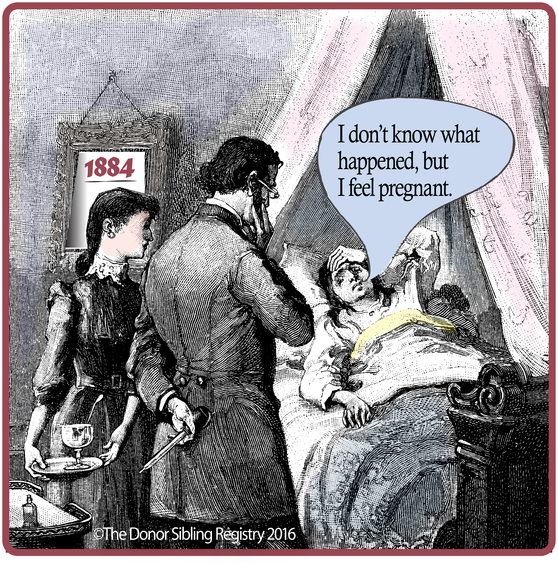This DSR blog will be paused from 2022-2025 while I focus on writing monthly articles for my Psychology Today page:
Donor Family Matters.
Here are links to the 2022 published articles from the first to the most recent:
3/6/22
Supporting Donor Family Members
Adequate counseling and education are vital.
3/25/22
A Brief History of Donor Conception
Looking at eight centuries of manipulating sperm.
4/19/22
Words Have Power in Sperm and Egg Donor Families
The language of reproductive medicine can be tricky.
5/5/22
Happy Mother's Day to Solo Moms (of Donor Kids)
Personal Perspective: A special shout-out to single mother (only) parents.
5/27/22
Donor Conception: Questions for Prospective Parents
Issues and themes to ponder when considering using donor gametes.
6/23/22
Truth and Honesty in Families of Donor-Conceived Children
Early disclosure is crucial for building a happy and healthy family.
7/21/22
A Dearth of Adequate Gamete Donor and Recipient Counseling
Education and counseling before selling or buying sperm and eggs is crucial.
8/25/22
Are You Thinking About Donating Your Sperm or Eggs?
A few practical, ethical, emotional, and medical issues to consider.
9/26/22
Nature and Nurture in Donor Families
Biological and non-biological parents matter.
10/26/22
Tips for Parents of Adult Donor-Conceived People
Are you about to disclose, or do you have a child who just found out the truth?
11/28/22
DNA: Donors Not Anonymous
Sperm and egg donor anonymity has not been possible since 2005.
12/13/22
Secrecy v. Privacy in Donor Families
Walking the fine line between privacy and secrecy is inherent in donor families.
Here are links to the 2023 published articles:
1/6/23
Why are Sperm and Eggs Still Sold Anonymously?
Personal Perspective: The consequences of donor anonymity.
1/27/23
Cornerstones of the Donor Family: Kindness and Empathy
From choosing a donor to expanding one's family to include donor relatives.
2/28/23
Tips for Donor-Conceived Adults Who Just Found Out the Truth
The road might be bumpy for a while, with a multitude of difficult emotions.
Donor-Conceived People Who Have Always Known the Truth
Being donor-conceived can have inherent challenges, even if told early on.
4/24/23
Egg and Sperm Donors: It's Complicated
Some common thoughts and feelings surrounding selling one's gametes.
5/8/22023
Donor-Conceived People: Curiously not Curious
Some insist that they are not at all curious about their donor origins.
6/12/2023
Parents of Donor-Conceived People
Researching the thoughts and feelings of biological and non-biological parents.
7/5/2023
Reaching Out to Sperm and Egg Donors
Weighing the risks and rewards when deciding whether to attempt contact.
7/27/2023
Why Is There a Shortage of Black Egg and Sperm Donors?
Creating a more diverse donor landscape.
8/7/2023
Donor-Conceived Children Meeting Their Half-Siblings
Widening one's family circle with enriching, lifelong relationships.
9/5/2023
Gamete Sellers: It's More Than Just a Financial Transaction
Common themes, topics, and issues that arise with former egg and sperm donors.
10/2/2023
Sperm Banks, Egg Facilities, and the Backfire Effect
Why have gamete sellers been resistant to evolving ideas about donor families?
11/1/2023
Contacting a Gamete Donor for the First Time: The Letter.
You might not get a second chance to make a first impression.
12/4/2023
Donor Offspring: Curiosity, Connecting, & Attachment Theory
Securely attached individuals are more likely to have a positive experience.
Here are links to the 2024 published articles:
1/4/2024
DNA Matters: Psychological Differences in Donor Families
Accurate and updated mental health information is vital for families and donors
1/25/2024
The Ethical Sperm Bank: An All-Open Sperm Bank
An idea whose time has come.
2/26/2024
The Problems With Donor-Sibling Groups of 50, 250, or More
Important medical, psychological, and social implications for donor offspring.
3/29/2024
What Rights are Important to Donor-Conceived People?
Identity, acknowledgment, dignity, and connection.
4/30/2024
Honest Terminology in Egg Donation Families
The person who contributes the egg is the biological or genetic mother.
5/30/2024
Gamete Donors Connecting With Offspring and Their Families
Barriers: the perception of rejection, worry, fear, and other concerns.
6/19/2024
Donor Families: Mutual Consent Contact
Personal Perspective
8/5/2024
Enhancing Family Connections in Donor Conception
A call for simplicity and transparency in donor-family relations.
8/19/2024
Donor-Conceived People: The Search for Ancestry and Identity
Discovering family history enhances self-understanding and connection.
9/18/2024
Bypassing Trauma in Donor-Conceived People
The power of early disclosure and donor family connections to reduce trauma.
10/15/2024
Widening the Family Circle: Sperm and Egg Donors' Families
A donor's partner, parents, and children can support broadening the family.
11/5/2024
Parents of Young Donor Children: Modeling Conversations
Empowering donor-conceived children to be confident and proud of their origin story.
12/11/2024
Donor Families: Navigating Disenfranchised Grief
When donor families have feelings of unacknowledged loss and or rejection.
Here are links to the 2025 published articles:
1/28/2025
Donor Conception Disclosure: Telling Others
Making the decision to disclose donor conception to family, friends, and others.
2/18/2025
The Hidden Ties That Bind
Donor sibling meetups sometimes mask a deeper truth.
3/24/2025
From Fate to Destiny: Finding Donor Relatives
Donor-conceived people can be empowered to search for and find answers.
4/9/2025
Breaking the Zero-Sum Myth: Expanding Donor Families
Love often grows when families do—as many donor families find out.
5/19/2025


 Browse by Clinic
Browse by Clinic
 Become a Member
Become a Member

